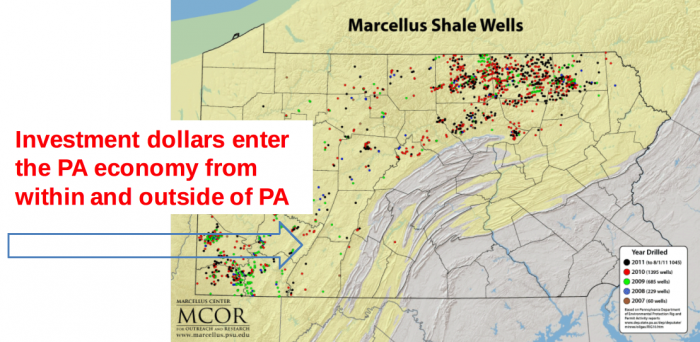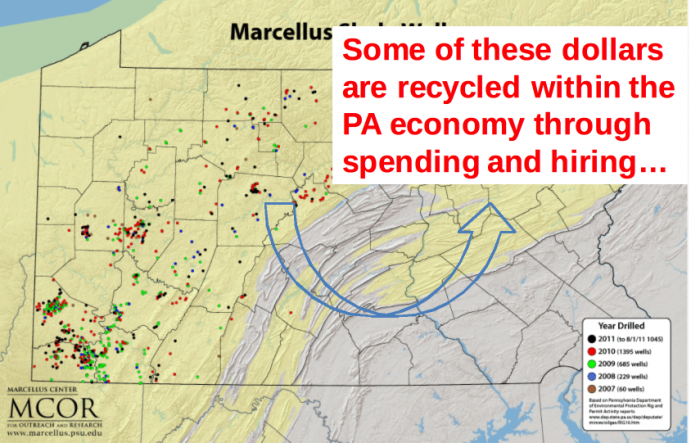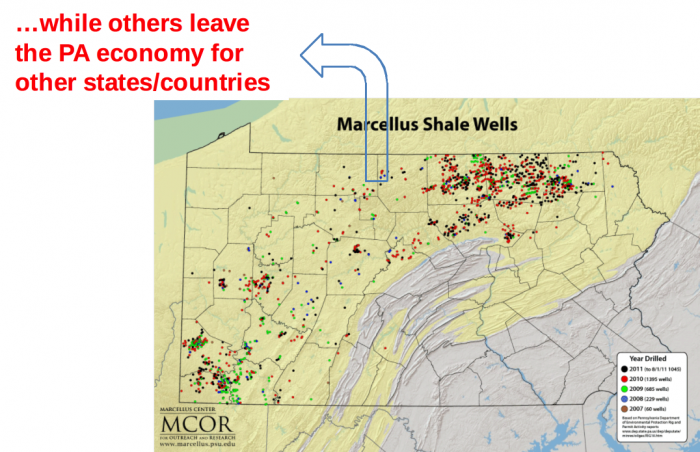The Ins and Outs of Workforce Impact Modeling
So, where do all these numbers come from? Most studies of workforce impacts utilize a method known as “input-output modeling.” They use data from the U.S. government to identify how much money flows between different economic sectors in a given year. For example, drilling a natural gas well requires spending a certain amount of money on concrete, electricians and so forth. The U.S. government collects this data from companies that develop natural gas wells and assembles it into gigantic databases. Calculating the workforce impacts amounts to using these databases to see how a dollar invested in one industry trickles through other industries. This process is described in the figure below using the Pennsylvania Marcellus Shale as a visual backdrop.



Input-output models can be used to estimate both direct, indirect and induced workforce impacts because the databases collected by the government include data on consumer spending and saving. For example, suppose that the natural gas industry spends ten million dollars within Pennsylvania on a new well. The input-output tables might tell us that for every ten million dollars spent within the natural gas industry, one million of those dollars are spent on construction workers. Those workers represent a direct economic impact. Then, those same input-output tables are used to see how the construction industry spends one million dollars. They might tell us that for every million dollars spent by the construction industry, one hundred thousand dollars are spent on cement. This expenditure on cement would represent an indirect economic impact.
Input-output models are the best tools that economists currently have for estimating workforce impacts associated with any industrial activity, not just in the energy industry. Calculating the direct workforce associated with a specific energy project can be done without input-output modeling (the study referenced above by the Marcellus Shale Education and Training Center is one good example of how this is done) but getting a handle on the size of spillover effects to other sectors of the economy usually requires something like an input-output model.